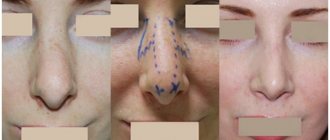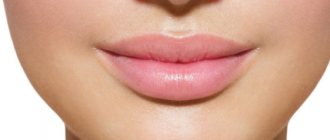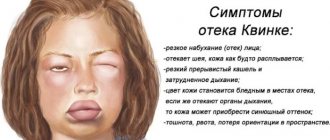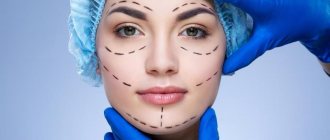Nasal tip rhinoplasty is a frequently requested correction. This is the central part of the face and all geometry and perception of appearance depends on it.
Nature has endowed each person with different external characteristics. The tips of the nose also differ: they range from upturned and thin, narrow and wide to voluminous and drooping. And it often happens that the nasal design does not satisfy the owner.
This is where plastic surgery comes to the rescue. What are the options for correcting the deficiency?
What is nasal tip rhinoplasty?
Rhinoplasty of the tip of the nose is a surgical method for correcting this area and is the most popular rhinoplasty operation.
There are several common factors that can create a rounded nose tip (or potato nose).
- Patients with thicker skin on the nose often experience a more rounded tip. In this case, you can remove excess tissue.
- The second reason is the cartilage itself. The lower and lateral cartilages may be too wide or convex.
The operation will correct the tip of the nose:
- rounded - will reduce;
- lowered - will raise;
- crooked - straightens;
- wide - narrows.
The drooping tip is corrected by removing the cartilage tissue.
But plastic surgeons also perform other types of correction. This includes eliminating asymmetry and sagging of the columella (the skin septum separating the nasal passages), etc.
This kind of plastic surgery is among the most difficult. The complexity of surgical intervention is caused by the peculiarities of each manipulation. After all, the structure and shape of cartilage tissue in a particular patient is unique.
After an unsuccessful operation, the patient risks getting a distorted and deformed tip or the entire nose. Therefore, you should trust an experienced surgeon: he will definitely plan the operation on an individual basis.
To do this, you need to study the best rhinoplasty specialists in Moscow or another city.
Indications
The operation is carried out according to direct and indirect indications. In the first case, the procedure is used to correct serious congenital defects or anomalies that are caused by burns, frostbite and mechanical damage. Indirect indications mean the patient’s desire to improve his appearance, to make his facial features more proportional and attractive.
Surgery is indicated if the tip of the nose:
- too wide;
- forked;
- curved;
- upturned or down;
- deformed as a result of injury or surgery.
Computer modeling is used to predict results. Thanks to this technology, the patient can see how his face will change after surgery.
Who is not suitable for rhinoplasty?
Clients of plastic surgeons who have certain contraindications will not be able to go to the clinic to have their nasal tip transformed.
CONTRAINDICATIONS
- oncological diseases;
- signs of infections;
- presence of diabetes mellitus;
- acute and chronic diseases;
- autoimmune disorders;
- insufficient blood clotting;
- inflammation in the nasal space.
For pregnant women, manipulation is indicated after the successful birth of newborns.
Correction methods
Today, medical and cosmetology clinics more often use the modeling method using computer equipment. Therefore, even before the operation, the patient sees in the photo a face with a new tip.
The plastic procedure to transform the configuration of the nose is carried out in 2 ways - open or closed.
In open rhinoplasty, the doctor first makes an incision in the area of the bridge and subsequently releases the pterygoid cartilage with further removal of excess tissue.
Finally, stitches are applied. If you need to raise or strengthen the tip, use post cartilage.
The doctor, using such technology, controls the operating process. This helps the surgeon avoid possible mistakes and miscalculations.
In a closed procedure, the doctor cuts the nasal mucosa, releases the alar cartilage and applies sutures to create the desired shape. But this method does not give scope to the doctor’s actions, as is the case with the use of an open procedure, since the plastic doctor is limited in the use of technology.
In this case, it is difficult for the surgeon to trace possible damage to the blood vessels. Because of which the patient risks getting hematomas and prolonging rehabilitation.
Closed rhinoplasty leaves a tiny 4-5 mm seam at the threshold of the nose.
The doctor decides which method of procedure to resort to. In order not to run into trouble, it is better to go to the best rhinoplasty surgeons in St. Petersburg, Yekaterinburg and other cities.
Carrying out the operation
The surgeon performs correction of the apex of the nose for the patient using a general or month.
The duration of the procedure does not exceed 1-2 hours (in rare cases 3).
During the operating period, the surgeon invades the soft and cartilaginous tissues, the columella. The procedure is performed taking into account the anatomical characteristics of the client.
The structure, strength, shape, thickness of the cartilage tissue of his nose, and other qualitative differences are taken into account.
The doctor peels off the soft tissue from the bone structures and nasal space in order to gradually carry out the prescribed measures to change the design. At the same time, the surgeon adheres to the rule “Do no harm!” so that the patient’s appearance is not damaged.
Due to excessive cutting of cartilage and other tissues supporting the apex, loss of the supporting functions of the nose is possible. And this leads to warping and disruption of the natural appearance.
But even if the nose has not lost its individuality after surgery, accompanied by excessive tissue cutting, the patient runs the risk of unsatisfactory healing. Therefore, the surgeon’s goal is not to disrupt the supporting properties of the nose.
In reality, tip-only rhinoplasty is rarely necessary.
Correction of one area of the nasal anatomy may affect other areas.
It is recommended to watch an interesting video about the correction of this part of the body:
Recovery period
Usually this is a calm period that proceeds without any particular complications or troubles, if you strictly adhere to the instructions of your doctor.
On this topic
- Rhinoplasty
Features of playing sports after rhinoplasty
- Editorial board of Plasticology.ru
- June 19, 2020
The most unpleasant thing that can happen after surgery is the appearance of swelling and bruising at the tip.
Pain may also occur, but it does not interfere with the breathing process. More important during the rehabilitation period is compliance with general requirements:
- During the first week after surgery, you should not be exposed to prolonged exposure to sunlight .
- During the rehabilitation process, the patient must refrain from smoking and drinking coffee and alcohol.
- Physical activity and sports are also not allowed.
- You should try to avoid sudden changes in temperature and not be in places that are too cold or too hot.
- You should not drink more than two liters of liquid per day, as this can lead to swelling, which in turn will cause pain.
- It is worth excluding too hot, spicy and salty foods from your diet.
The more serious the intervention, the longer you will have to wait for the result; if the cartilage and bone tissue of the nose have undergone significant deformation, you will have to wait 1-2 months.
In the first days after surgery, you must remain in bed and, if possible, keep your head as high as possible. You can only sleep on your back, and if problems arise with this and the patient turns over on his side in his sleep, monitoring is necessary.
Hygiene issues are of particular importance at this time, but taking hot baths or contrast showers is unacceptable. It is better to take a quick, warm shower and try to wet your face as little as possible.
On this topic
- Rhinoplasty
How to reduce your nose with potatoes
- Editorial board of Plasticology.ru
- June 19, 2020
Swimming pools, saunas and solariums are completely excluded during this period. And, most importantly, it is necessary to avoid stressful situations and be at rest, since increased pressure as a result of stress can also provoke an increase in edema.
If these recommendations are followed, the shape of the nose is finally formed after one year, after which all restrictions on the patient are removed.
Types of procedure
Using plastic manipulation, it is permissible to make the following adjustments:
- Reduction of the nasal tip is achieved by reducing the supporting structures. Correction is carried out by measures: shortening the lateral crura, dissecting the lateral and median crura of the cartilages, gunning the notches, cutting or softening the median crura of the cartilages. The technique of reducing the nasal apex ends with stretching the external passages. To prevent this from happening, the surgeon performs a resection of the alar shaft to narrow the nostrils.
- Enlargement (lengthening) of the nasal tip is associated with the concept of “ideal projection”. It is determined by the location of the tip above the back line, which gives a piquant snubness. To achieve this result, it will be necessary to integrate the median crura with the lower lateral cartilages and narrow the flat domes of the alar tip cartilages. It happens that lengthening occurs with the use of a cartilage biograft, and it leads to the strength of the tip. It is also possible to use a tissue graft at the tip in the dome area.
- Reducing the width (narrowing) of the apex of the nose. Excessive width is formed by the volume of the cartilage of the sides of the nose, placement and outline. Such a defect is eliminated by connecting the legs of the lower lateral cartilages and regenerating the cartilage of biotransplants. The tip of the nose, which is reduced in width, appears pointed. According to reviews of those who have undergone this procedure, each of them received elegant changes on their faces.
- Repositioning of the tip is indicated in case of excessive downward/upward inclination. The defect is corrected by connecting the median crura of the lower lateral cartilages with their further fixation with a jumper in the selected position.
In order for the plastic surgery to be successful, you should trust the experience and skill of the surgeon.
Recommendations before surgery
Preparation for manipulation is important for both the doctor and the patient. The plastic surgeon thoroughly examines the client to assess his health and identify possible contraindications.
7 days before rhinoplasty, the client gives up smoking, alcohol, and medications that affect blood clotting. He also takes tests before the procedure:
- general – blood, urine;
- biochemical - blood;
- for hepatitis and HIV;
- for prothrombin;
- for antigen.
The results of fluoroscopy, computed tomography of the paranasal cavities, fluorography, and ECG will also be required.
If a plastic surgeon neglects any stage in the preparatory period for surgery, it is preferable to refuse services.
Complications (possible) after rhinoplasty
Such an operation is distinguished by its complexity and exquisite finesse in the work of the surgeon. And the risk of the patient seeking revision rhinoplasty cannot be ruled out. Among the possible negative manifestations:
- divergence of the edges at the incision sites;
- deformation of cartilage tissue;
- infection and bleeding.
The occurrence of an unsatisfactory outcome of rhinoplasty of the tip of the nose is due to the fact that there was excessive removal of cartilage tissue. After which the tip either rises strongly upward, like a pig’s snout, or, conversely, falls.
Such incidents can only be corrected by repeated measures. New procedures are performed to restore the backup and underlying structures that support the tip of the nose.
But you can repeat the operation no more than 3 times.
Cartilage on both sides must be removed in exact proportions to avoid asymmetry.
Repeated rhinoplasty is possible no less than 4 months after the previous procedure.
Contraindications
Rhinoplasty has absolute and relative contraindications. The absolute ones include:
- Oncological diseases;
- Hemophilia and other disorders of hemostasis;
- Disturbances in the functioning of the cardiovascular and endocrine systems;
- Severe mental disorders;
- HIV, syphilis and viral hepatitis;
- Tuberculosis;
- Pregnancy and lactation.
Correction of the tip of the nose is not carried out in all specific conditions of the body in which any surgical intervention is contraindicated in principle (except for operations performed for health reasons). Rhinoplasty is also prohibited for:
- Epilepsy (high risk of mechanical damage to the operated tissues);
- Bronchial asthma (increases the risk of complications);
- Autoimmune pathologies of connective tissues (the likelihood of scar formation and calluses increases).
Relative contraindications are acute infectious diseases and inflammatory processes on the skin in the area of surgical intervention. Surgical correction of the nose can be performed after treatment of these problems.
Price
The price of an event held at the tip of the nose may vary in different areas of the Russian Federation. The cost also reflects the clinic’s place in the ranking.
And it is ensured by the combination of professionalism and experience of surgeons and the level of service in a medical institution.
Thus, in Moscow, the average price for rhinoplasty starts at 110 thousand rubles. However, the cost of a repeat procedure is higher.
You shouldn’t take risks if the clinic offers lower prices than competitors. Such an operation cannot be priced too cheaply.
Reviews
ANNA, NOVOSIBIRSK:
“I decided to undergo rhinoplasty, having a natural defect in the tip of the nose.
There was no confidence in a positive result. But, surprisingly, everything went smoothly, and after a month no defects were discovered.”
GALINA, MOSCOW:
“My parents rewarded me with a raised tip of my nose. And I dreamed of changing it. I looked at the before and after photos, found out the price and decided to go under the scalpel. I agreed to rhinoplasty, and now I’ve been happy with my appearance for 1.5 years. Moreover, no complications were observed after the operation.”
ZHANNA, St. Petersburg:
“Rhinoplasty reduced large nostrils. It came out a week later, and showed up at work two weeks later.
The swelling went away quickly after the operation. But I was able to see a new nose after 6 months. I am satisfied with the result and do not regret the money and time spent, which is noticeable in the before and after photos.”
TATYANA, KALUGA:
“At first I removed the hump, but after rhinoplasty the tip of the nose sank.
Because of this, I had to undergo a second operation to raise it. I was looking forward to the time for new plastic surgery.
But I was warned about such consequences. And now the revision rhinoplasty is over, and the nose has become perfect.”
Pros and cons of rhinoplasty
When deciding to undergo surgery, it is worth considering all its pros and cons. The first include:
- the opportunity to get rid of the disadvantage forever;
- elimination of psychological problems associated with an unsightly nose;
- a chance to correct the nuances that interfere with free breathing.
The intervention also has disadvantages:
- you will have to endure pain, lead a solitary life with restrictions for some time;
- the result may not be satisfactory, and a repeat operation can only be done in a year;
- there is a risk of complications;
- you need to get used to the different appearance of your own face, which is not always easy.
We recommend reading about rhinoplasty for nose reduction. You will learn about indications for surgery, surgical options, recovery period, and cost. And here is more information about rehabilitation after rhinoplasty.
Expert opinion
- Cosmetologist
- Surgeon
Anna Avaliani
practicing cosmetologist
I would like to note: in order to correct the tip of the nose, it is not necessary to undergo surgery. The fact is that today it is possible to eliminate defects through contouring. This is an injection technique for which fillers are used. This method can be used to fill in depressions, scars, etc. Of course, using this method you cannot radically change your nose, but in many cases it will help. The downside of the procedure is that the results are not long-lasting, since the filler dissolves after 6-12 months. Therefore, you will have to regularly go for the procedure.
Aisha Baron
plastic surgeon
Remember that after surgery you should not go to the sauna or stay in the cold or extreme heat for a long time.
Do not overload your body as it needs recovery. It is also advisable to protect yourself from stressful situations. Whether to resort to rhinoplasty is up to everyone to decide for themselves. To do this, it is worth comparing the advantages and disadvantages of the method. A thorough consultation with a surgeon will clarify the aspects of the operation.
They will help you decide on the right choice of photos and videos before and after the procedure. In fact, rhinoplasty improves the client’s appearance and justifies the cost.
Differences from other types of operations
Surgeons treat plastic surgery of the tip of the nose more responsibly and seriously than general correction, since we are talking about delicate work, where every millimeter plays a role, and careless movement with a scalpel can lead to consequences.
Such operations are always planned individually and are performed only by experienced surgeons. It is important to take into account a number of individual features of the patient’s nose structure, including the strength of cartilage and skin thickness.
This operation is performed under local or general anesthesia, depending on the situation, but in any case, the procedure lasts no more than two hours, and with non-surgical correction, the patient can leave the surgeon’s office 15 minutes after the start of the operation.








